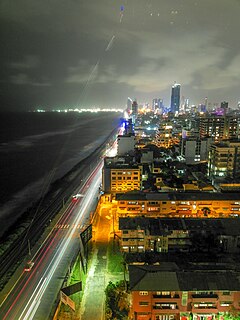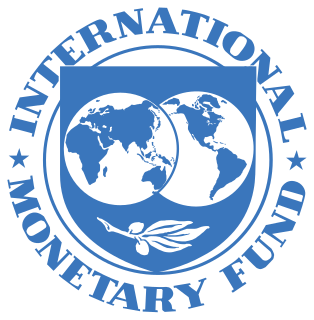
For a quarter of a century following independence, Cameroon was one of the most prosperous countries in Africa. The drop in commodity prices for its principal exports —petroleum, cocoa, coffee, and cotton — in the mid-1980s, combined with an overvalued currency and economic mismanagement, led to a decade-long recession. Real per capita GDP fell by more than 60% from 1986 to 1994. The current account and fiscal deficits widened, and foreign debt grew. Yet because of its oil reserves and favorable agricultural conditions, Cameroon still has one of the best-endowed primary commodity economies in sub-Saharan Africa.

Sparsely populated in relation to its area, the Democratic Republic of the Congo is home to vast potential in natural resources and mineral wealth. Despite this, the economy has declined drastically since the mid-1980s.

The economy of Djibouti is derived in large part from its strategic location on the Red Sea. Djibouti is mostly barren, with little development in the agricultural and industrial sectors. The country has a harsh climate, a largely unskilled labour force, and limited natural resources. The country's most important economic asset is its strategic location connecting the Red Sea and the Gulf of Aden. As such, Djibouti's economy is commanded by the services sector, providing services as both a transit port for the region and as an international transshipment and refueling centre.

The economy of Ecuador is the eighth largest in Latin America and the 69th largest in the world by total GDP. Ecuador’s economy is based on the export of oil, bananas, shrimp, gold, other primary agricultural products and money transfers from Ecuadorian emigrants employed abroad. In 2017, remittances constituted 2.7% of country's GDP. The total trade amounted to 42% of the Ecuador’s GDP in 2017. The country is substantially dependent on its petroleum resources. In 2017, oil accounted for about one-third of public-sector revenue and 32% of export earnings. Ecuador is one of OPEC's smallest members and produced about 531,300 barrels per day of petroleum in 2017. It is the world's largest exporter of bananas and a major exporter of shrimp. Exports of non-traditional products such as cut flowers and canned fish have grown in recent years. In the past, Ecuador’s economy depended largely on primary industries like agriculture, petroleum, and aquaculture. As a result of shifts in global market trends and development of technology have led to the economic development of other sectors like textile, processed food, metallurgy and the service sectors. Between 2006 and 2014, GDP growth averaged 4.3%, driven by high oil prices and external financing. From 2015 until 2018 GDP growth averaged just 0.6%. Ecuador's president, Lenín Moreno, has launched a radical transformation of Ecuador’s economy since taking office in May 2017. The aim is to increase the private sector’s weight, in particular the oil industry. The International Monetary Fund approved an agreement with Ecuador in March 2019. This arrangement would provide support for the Ecuadorian government’s economic policies over three years.

Moldova is a former Soviet republic in Eastern Europe. It is landlocked, bordered by Ukraine on the east and Romania to the west. The Republic of Moldova remains one of Europe's poorest nations.

Nicaragua's economy is focused primarily on the agricultural sector. It is the least developed country in Central America, and the second poorest in the Americas by nominal GDP. In recent years, under the administrations of Daniel Ortega, the Nicaraguan economy has expanded somewhat, following the global recession of 2009, when the country's economy actually contracted by 1.5%, due to decreased export demand in the US and Central American markets, lower commodity prices for key agricultural exports, and low remittance growth. The economy saw 4.5% growth in 2010 thanks to a recovery in export demand and growth in its tourism industry. Nicaragua's economy continues to post growth, with preliminary indicators showing the Nicaraguan economy growing an additional 5% in 2011. Consumer Price inflation have also curtailed since 2008, when Nicaragua's inflation rate hovered at 19.82%. In 2009 and 2010, the country posted lower inflation rates, 3.68% and 5.45%, respectively. Remittances are a major source of income, equivalent to 15% of the country's GDP, which originate primarily from Costa Rica, the United States, and European Union member states. Approximately one million Nicaraguans contribute to the remittance sector of the economy.

With an economy worth $93.45 billion $298.310 billion PPP and a per capita GDP of about $4,310, $13,480 PPP as of 2018 Sri Lanka has mostly had strong growth rates in recent years. The Sri Lankan economy has seen robust annual growth at 6.4 percent over the course of the 2003-2012 period, well above its regional peers. With an income per capita of 12,811 PPP Dollars or 4,103 nominal US Dollars, it is the second wealthiest nation in South Asia after the Maldives and is an upper middle income nation. The main economic sectors of the country are tourism, tea export, apparel, textile, rice production and other agricultural products. In addition to these economic sectors, overseas employment contributes highly in foreign exchange: 90% of expatriate Sri Lankans reside in the Middle East.

At the time of unification, South Yemen and North Yemen had vastly different but equally struggling underdeveloped economic systems. Since unification, the economy has been forced to sustain the consequences of Yemen's support for Iraq during the 1990–91 Persian Gulf War: Saudi Arabia expelled almost 1 million Yemeni workers, and both Saudi Arabia and Kuwait significantly reduced economic aid to Yemen. The 1994 civil war further drained Yemen's economy. As a consequence, for the past 24 years Yemen has relied heavily on aid from multilateral agencies to sustain its economy. In return, it has pledged to implement significant economic reforms. In 1997 the International Monetary Fund (IMF) approved two programs to increase Yemen's credit significantly: the enhanced structural adjustment facility and the extended funding facility (EFF). In the ensuing years, Yemen's government attempted to implement recommended reforms—reducing the civil service payroll, eliminating diesel and other subsidies, lowering defense spending, introducing a general sales tax, and privatizing state-run industries. However, limited progress led the IMF to suspend funding between 1999 and 2001.

The heavily indebted poor countries (HIPC) are a group of 37 developing countries with high levels of poverty and debt overhang which are eligible for special assistance from the International Monetary Fund (IMF) and the World Bank.
Structural adjustment programs (SAPs) consist of loans provided by the International Monetary Fund (IMF) and the World Bank (WB) to countries that experienced economic crises. The two Bretton Woods Institutions require borrowing countries to implement certain policies in order to obtain new loans. The conditionality clauses attached to the loans have been criticized because of their effects on the social sector.

Poverty reduction, or poverty alleviation, is a set of measures, both economic and humanitarian, that are intended to permanently lift people out of poverty.

The Latin American debt crisis was a financial crisis that originated in the early 1980s, often known as La Década Perdida, when Latin American countries reached a point where their foreign debt exceeded their earning power, and they were not able to repay it.
The economic liberalisation in India refers to the economic liberalisation of the country's economic policies, initiated in 1991 with the goal of making the economy more market- and service-oriented, and expanding the role of private and foreign investment. Most of these changes were made as part of the conditions laid out by the World Bank and the IMF as a condition for a $500 million bail out to the Indian government in December 1991. Specific changes include a reduction in import tariffs, deregulation of markets, reduction of taxes, and greater foreign investment. Liberalisation has been credited by its proponents for the high economic growth recorded by the country in the 1990s and 2000s. Its opponents have blamed it for increased inequality and economic degradation. The overall direction of liberalisation has since remained the same, irrespective of the ruling party, although no party has yet solved a variety of politically difficult issues, such as liberalising labour laws and reducing agricultural subsidies. There exists a lively debate in India as to whether the economic reforms were sustainable and beneficial to the people of India as a whole.
The 1991 Indian economic crisis had its roots in 1985 when India began having balance of payments problems as imports swelled, leaving the country in a twin deficit: the Indian trade balance was in deficit at a time when the government was running on a large fiscal deficit. By the end of 1990 in the run-up to the Gulf War, the situation became so serious that the Indian foreign exchange reserves could barely finance three weeks’ worth of imports while the government came close to defaulting on its financial obligations. By July that year, the low reserves had led to a sharp depriciation of the rupee, which in turn exacerbated the twin deficit problem. Chandrasekhar government could not pass the budget in February 1991 at a crucial time when Moody had downgraded India and it further went down after the budget was not passed and global credit-rating agencies further downgraded India from investment grade making it impossible to even get short term loans and the government was in no position to give any commitment to reform the economy. The World Bank and IMF also stopped their assistance, leaving the government with no option except mortgaging the country's gold to avoid defaulting on payments.
The Federal Ministry of Budget and National Planning is one of the Federal Ministries of Nigeria.

The National Post Office is the company responsible for the postal service in Rwanda. As of 2009, the Director General of National Post Office was Celestin Kayitare.
The World Bank Group country partnership framework aims to support Haiti's efforts to reduce poverty and provide economic opportunities for all Haitians. The framework aims to strengthen institutions, government capacity, and public financial management as aid and concessional financing rapidly decline.

















